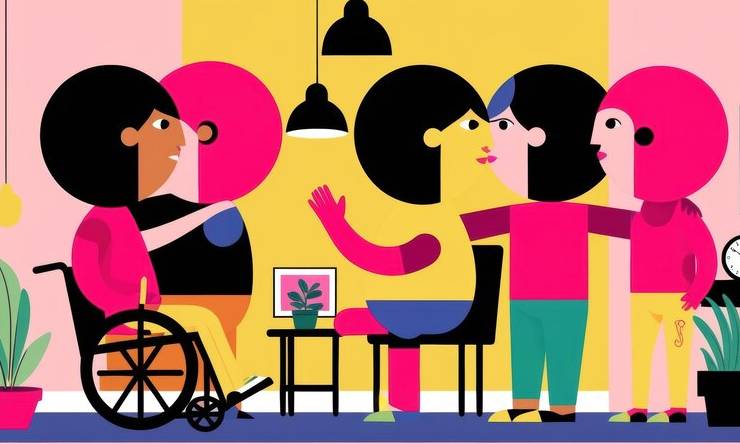In today’s digital age, logo animation has become a vital component of brand identity. A well-crafted animated logo can convey a brand’s personality, grab attention, and create a memorable impression. However, as we move towards a more inclusive world, it’s essential to ensure that logo animations are not just visually appealing but also accessible to everyone. This blog explores how to design logo animations that prioritize accessibility and inclusion, highlighting best practices and offering insights into how logo animation services can be optimized to meet these goals. We will also touch upon the role of 3D animation services in enhancing accessibility.
Understanding Accessibility and Inclusion in Logo Animation
Accessibility refers to the design of products, devices, services, or environments for people with disabilities. In the context of logo animation, it means creating animations that can be perceived and understood by everyone, including those with visual, auditory, or cognitive impairments. Inclusion goes beyond accessibility to ensure that all individuals, regardless of their abilities or circumstances, feel welcome and represented.
Why Accessibility Matters in Logo Animation
- Legal Compliance: Many countries have regulations that require digital content to be accessible. Ensuring your logo animation meets these standards helps avoid legal issues.
- Broader Reach: Accessible animations can reach a larger audience, including people with disabilities who might otherwise be excluded.
- Brand Reputation: Companies known for inclusivity often enjoy a positive reputation and customer loyalty.
- User Experience: Inclusive designs generally enhance user experience for everyone, not just those with disabilities.
Best Practices for Designing Accessible Logo Animations
1. Consider Color Contrast
Color contrast is crucial for users with visual impairments, such as color blindness. Ensure that your logo animation uses high contrast between foreground and background colors to make it readable. Tools like the WebAIM Contrast Checker can help verify contrast ratios.
- Example: If your logo has a red background and white text, ensure that the red is sufficiently dark to provide a clear contrast with the white text.
2. Provide Text Alternatives
Text alternatives (like captions and descriptions) are essential for users who are deaf or hard of hearing. While this is more commonly applied to video content, incorporating text or graphic elements into logo animations can improve accessibility.
- Example: Include a brief description of the animation’s content or purpose in the accompanying text or on a dedicated webpage.
3. Use Clear and Simple Animation
Complex animations can be challenging for users with cognitive impairments. Keep animations simple and avoid overly complex transitions or effects. Clear, straightforward animations are easier to follow and understand.
- Example: Instead of using rapid, multi-layered effects, opt for smoother transitions that gradually reveal elements of the logo.
4. Allow Control Over Animation Speed
Some users might need more time to process animations. Providing options to slow down or pause animations can help accommodate these needs. This can be especially useful in interactive logo animations where users engage directly.
- Example: Implement controls that allow users to adjust the speed of the animation or to pause and resume it.
5. Ensure Keyboard Navigation
For users who rely on keyboards instead of mice, ensure that interactive elements of your logo animation are navigable via keyboard. This is particularly relevant for web-based animations.
- Example: Include tab navigation for interactive logo elements, allowing users to access different parts of the animation without using a mouse.
6. Test with Real Users
Testing your animations with real users who have disabilities provides invaluable feedback. Conduct user testing sessions to identify potential issues and gather insights on how to improve accessibility.
- Example: Engage users with various disabilities in testing phases to ensure the animation meets their needs.
The Role of 3D Animation Services in Accessibility
1. Enhanced Visual Clarity
3D animation services offer advanced tools and techniques that can enhance the visual clarity of logo animations. 3D animations can be designed to ensure depth and separation between elements, making them easier to distinguish for users with visual impairments.
- Example: 3D effects can provide clear depth cues, which can help users with low vision better perceive different layers of the animation.
2. Interactive Features
3D animations can incorporate interactive elements that allow users to control how they view and interact with the content. This can be beneficial for accessibility, as users can adjust the view according to their preferences.
- Example: Allow users to rotate a 3D animated logo to view it from different angles, which can be particularly useful for those with visual impairments.
3. Advanced Color Adjustments
3D animation software often includes tools for precise color adjustments, helping to ensure that animations meet accessibility standards for color contrast. This can be particularly useful in creating animations that are both visually appealing and accessible.
- Example: Use 3D animation tools to fine-tune color contrast and ensure compliance with accessibility guidelines.
4. Customizable Animation Paths
With 3D animation services, you can create customizable animation paths that users can adjust according to their needs. This can enhance accessibility by allowing users to interact with the animation in a way that suits their individual preferences.
- Example: Users can choose different animation paths or adjust the speed of movement to better suit their needs.
Implementing Accessible Logo Animation Services
When integrating accessibility into your logo animation services, consider the following steps:
- Collaborate with Accessibility Experts: Work with experts who specialize in accessibility to ensure your animations meet all relevant guidelines and standards.
- Incorporate User Feedback: Regularly seek feedback from users with disabilities to understand their needs and preferences.
- Stay Informed on Best Practices: Keep up-to-date with the latest developments in accessibility standards and best practices.
- Provide Accessibility Options: Offer options that allow users to customize their experience, such as adjusting animation speed or enabling text descriptions.
Conclusion
Designing logo animations with accessibility and inclusion in mind is not just a legal requirement but a moral imperative. By implementing best practices and leveraging advanced 3D animation services, you can create animations that are both engaging and accessible to a wider audience. Embracing accessibility not only enhances user experience but also demonstrates a commitment to inclusivity, setting your brand apart in an increasingly diverse world.




